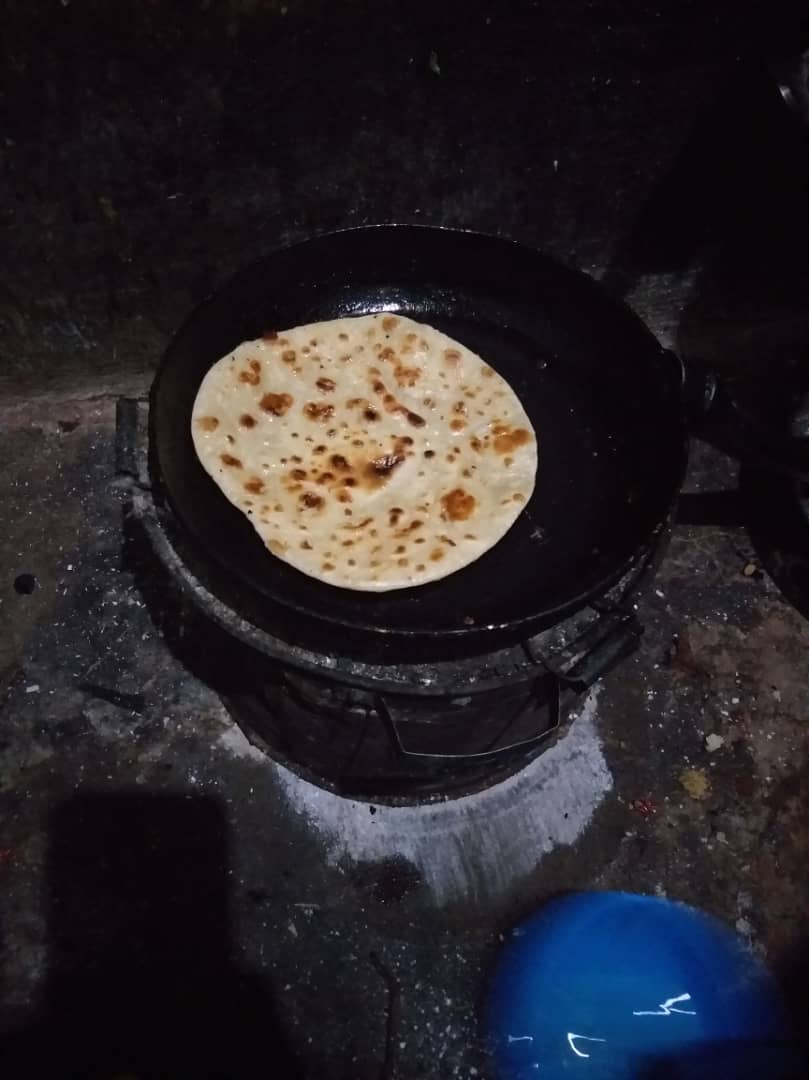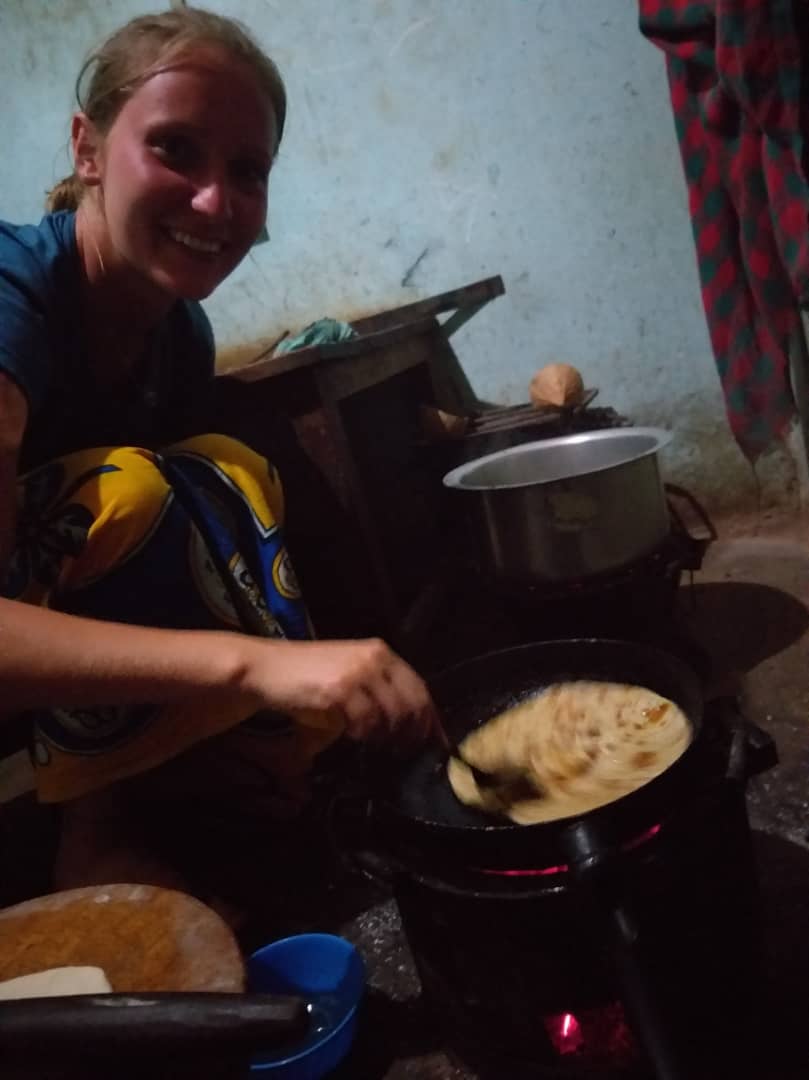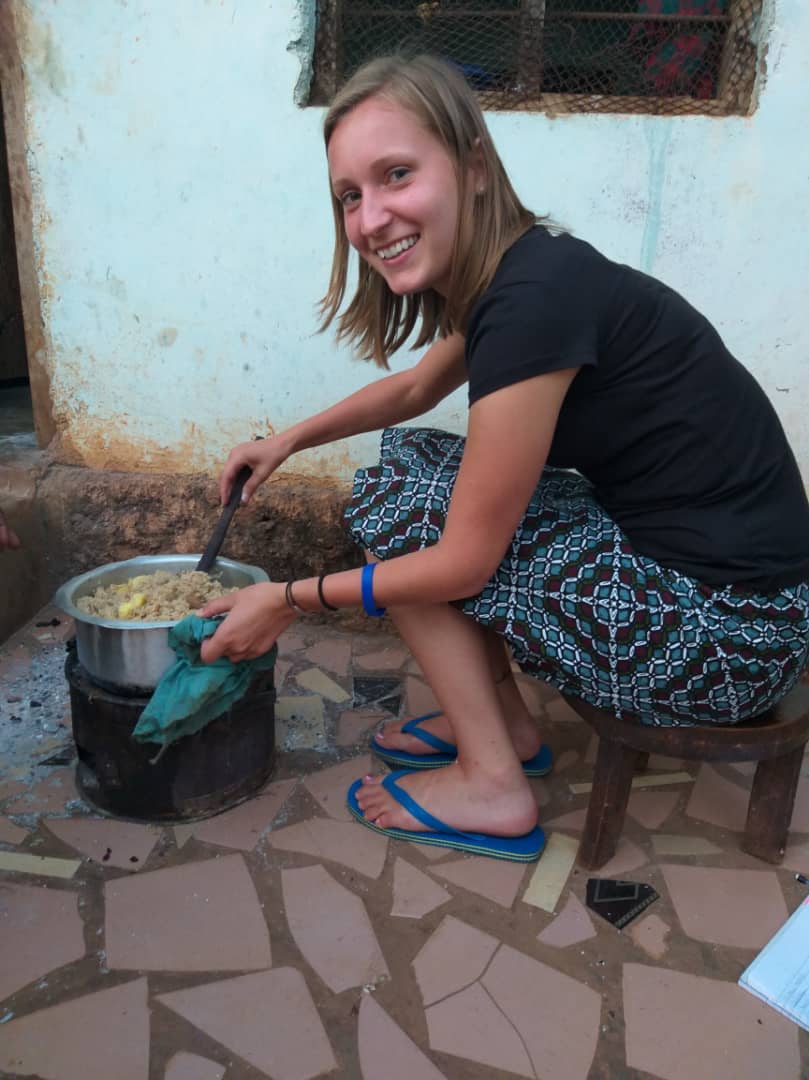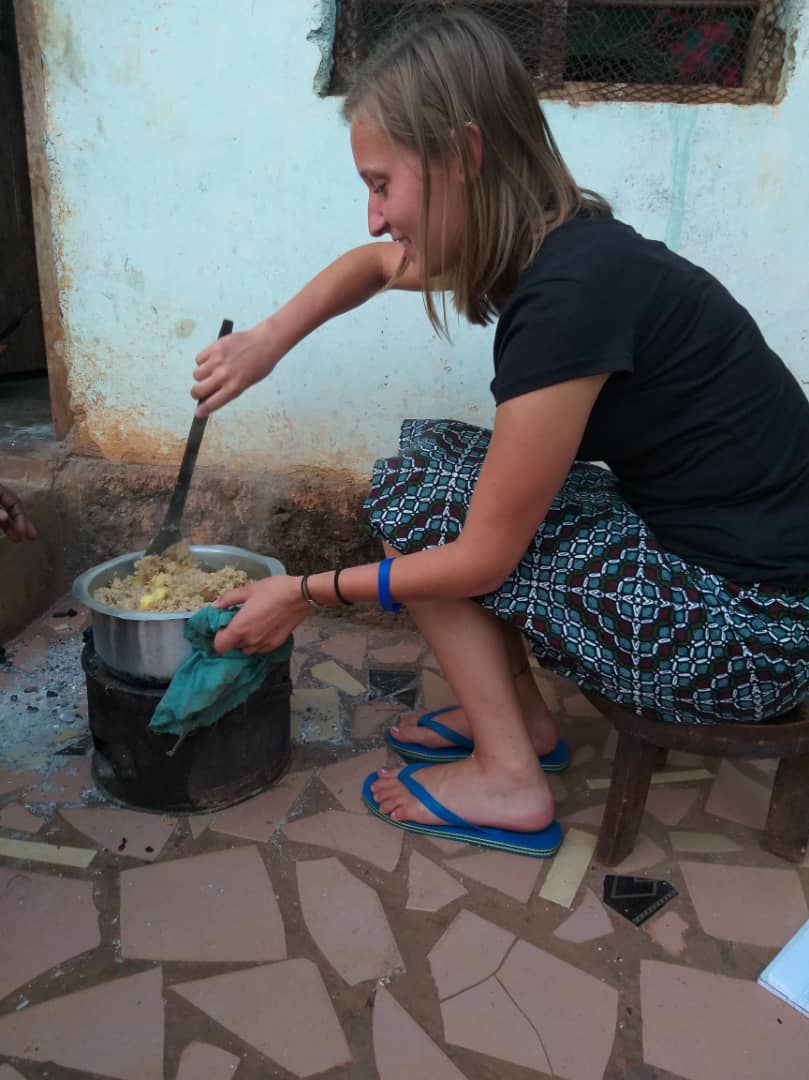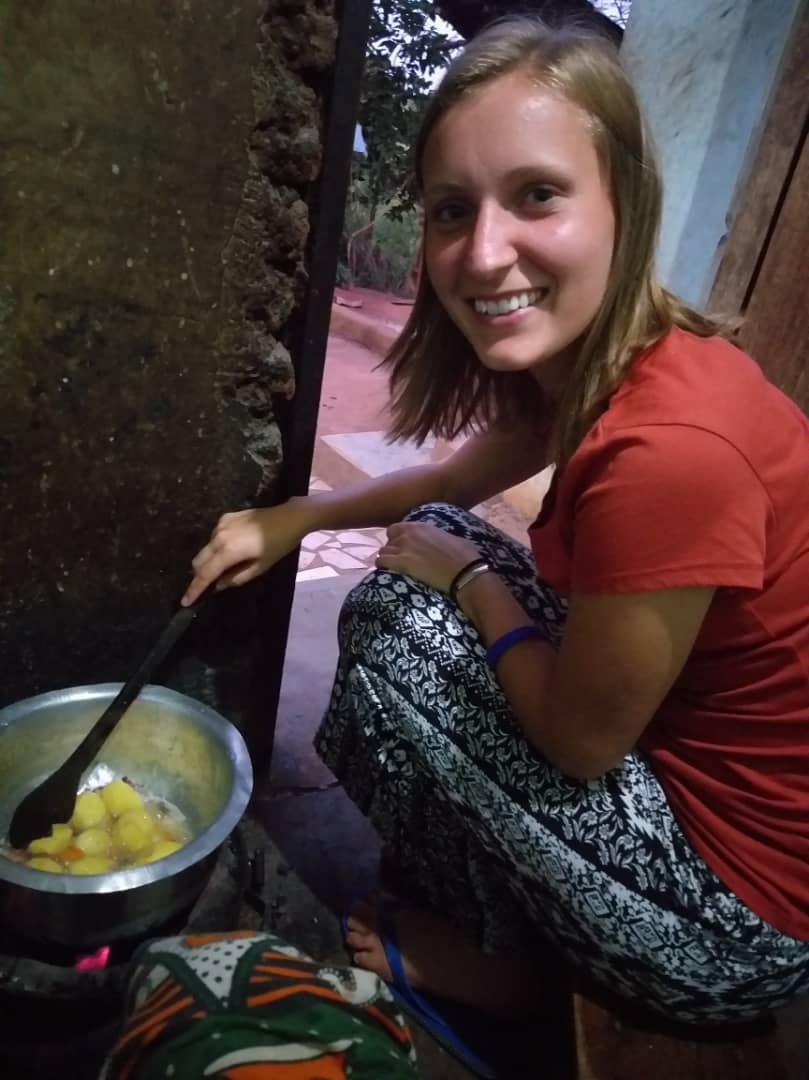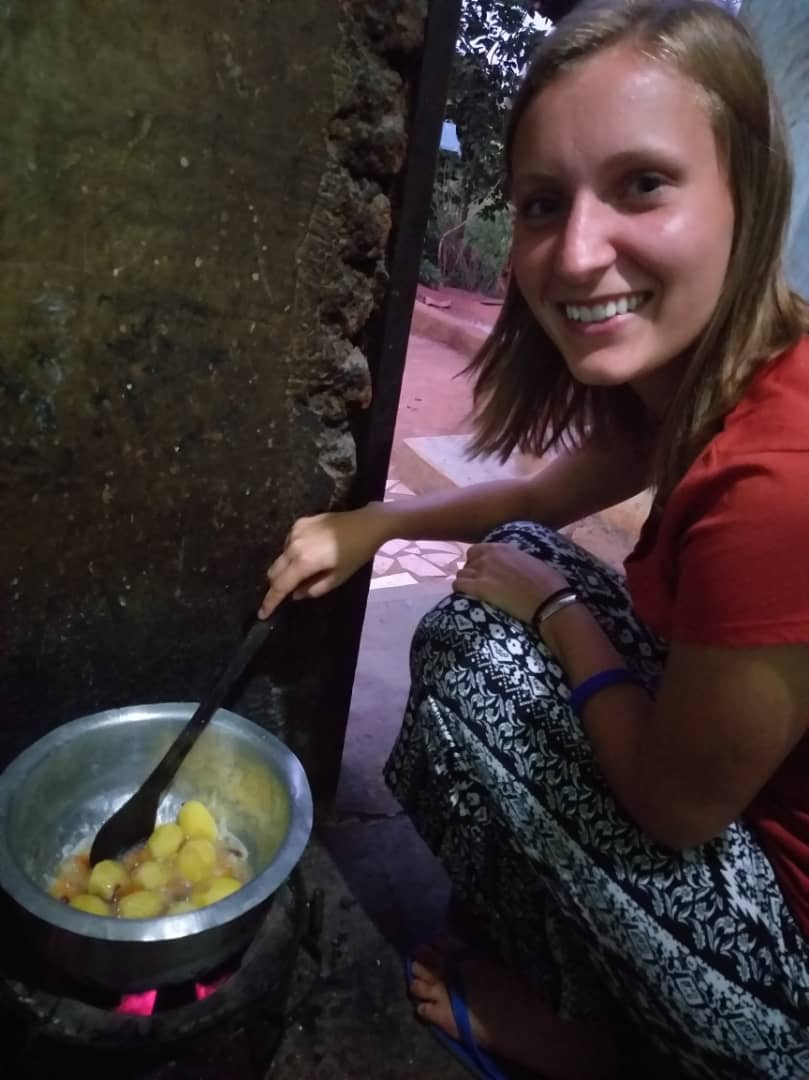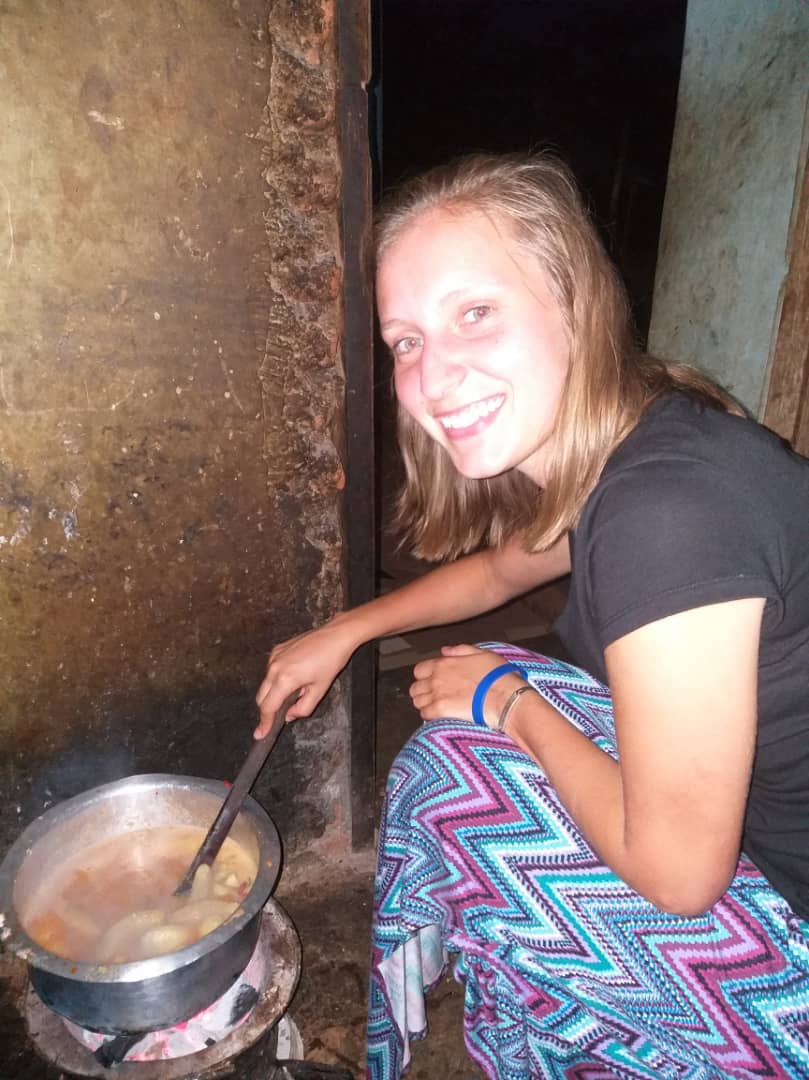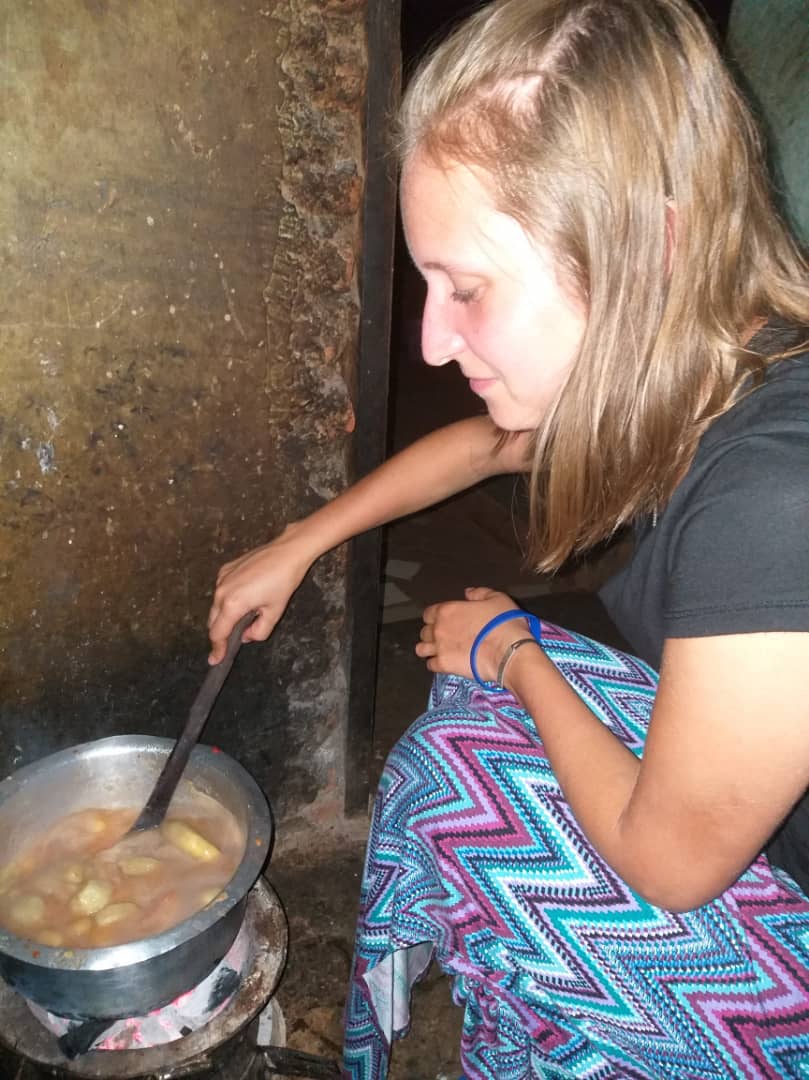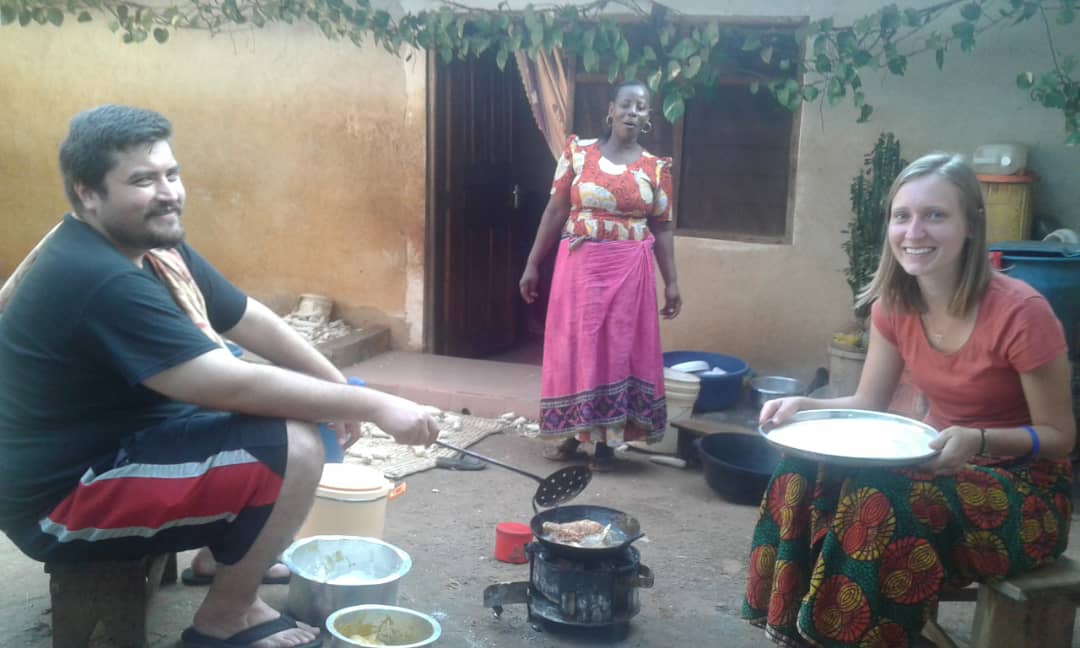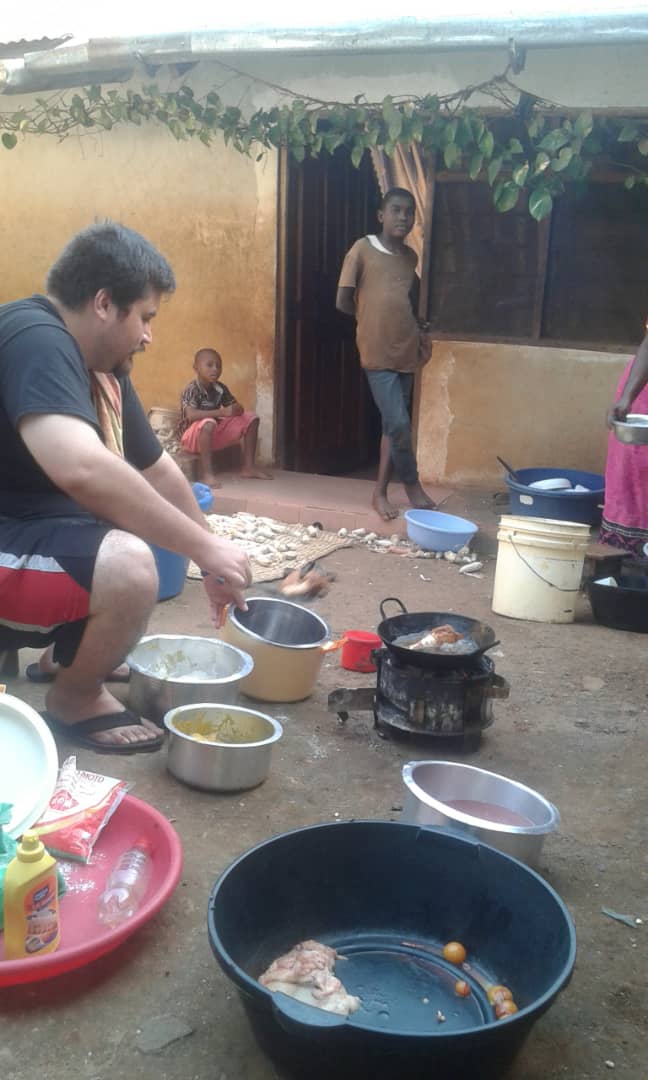A large part of my homestay experience has been cooking. I have learned to cook traditional dishes using local resources. That usually means cooking each dish on a single charcoal jiko (burner). Most families have a variety of “hot pots” which are just insulated pots that can keep each dish warm as you work on cooking the others. I have learned to make chapati (which is comparable to tortillas), pilau (which is a rice dish that contains potatoes, carrots, and a chunked meat of choice), viazi (which literally means potatoes), ndizi ya kupika (which translates to cooked bananas and is a common dish made by boiling unripe bananas), mchicha (most easily explained as cooked spinach) and tambi (tambi is the word used for spaghetti noodles but can be prepared a variety of ways, the most common is what us trainees refer to is “sugar noodles” because it is exactly how it sounds, sugar added to the boiling noodles). I also helped to prepare “Guam style fried chicken” with a fellow volunteer who planned a meal for his family. We started with a live chicken and ended with fried chicken. During one of the training sessions we recieved a cookbook with many common recipes of things you can make in Tanzania using local resources. I look forward to experimenting with different recipes once I get to my site in a few short weeks!


